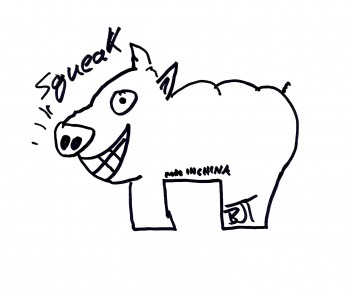In one of my other blogs I referenced a New Yorker article called “Groupthink.” The article challenges many of the ways brainstorming is done, but most clearly indicts the idea that we should suspend judgment when brainstorming in a group. The classic brainstorming instruction “build, don’t criticize” turns out to be wrong, according to some recent research. This follows on the heels of new learning that shows we are more creative and productive alone than in groups.
It seems that a lot of the feel-good team spirit that occurs in many organizations around brainstorming is just that. It’s not really as productive as we’ve been led to believe. And a lot of the performance art that is used to make the process fun, silly and good for team spirit may not be the best way to generate new ideas.
What’s the alternative? Brainstorming that encourages saying anything that comes to mind, but also encourages debate and criticism of the ideas as they are generated. Perhaps surprisingly, brainstorms that allow this kind of debate and criticism are able to produce more ideas.
Having facilitated a few brainstorms, I think that not only is debate okay, but that structuring the brainstorm with models and new theories that may cause some anxiety and disagreement are also highly productive ways to generate ideas. As UC Berkeley’s Dr. Charlan Nemeth is quoted as saying in the New Yorker, “Maybe debate is going to be less pleasant, but it will always be more productive.” Moreover, she says that “authentic dissent can be difficult, but it’s always invigorating. It wakes you right up.”
We like to actively challenge our clients in brainstorms. We don’t even call them brainstorms — they are work sessions. Funny thing is, clients still seem to enjoy the process and the results.
Turn around is fair play too. Sometimes great clients are great at challenging a recommendation. They cause all sorts of consternation at agencies and with consultants, but it sure does wake everyone up. The best clients I’ve seen will relent if the idea really is the best one out there, but it ensures that the options have been explored and that less obvious answers were brought forward. Of course, we try to road-test like this internally, before an idea goes to the client.
The only issue I can see with this new learning is that brainstorms can easily get bogged down. You can spend all the allotted time debating one issue and not move on to other ideas. Of course a “parking lot” can help with this, but I wonder if it’s not another technique that moves us away from needed conflict too soon.
Lots to chew on as we develop our next work session.



0 Comments
Comments are open. Leave one using the form below.